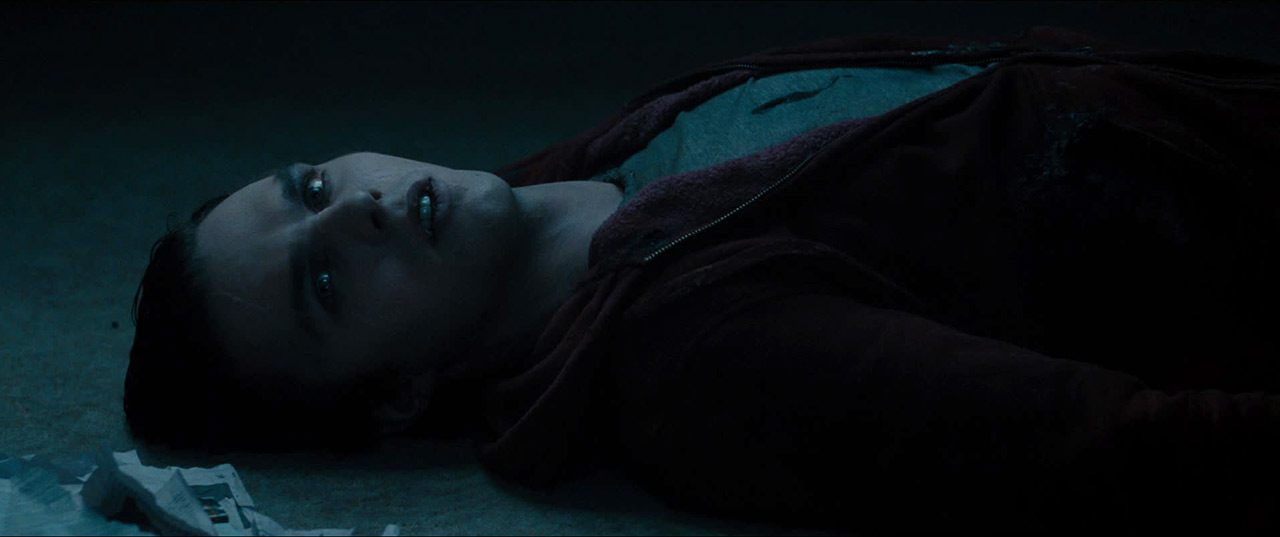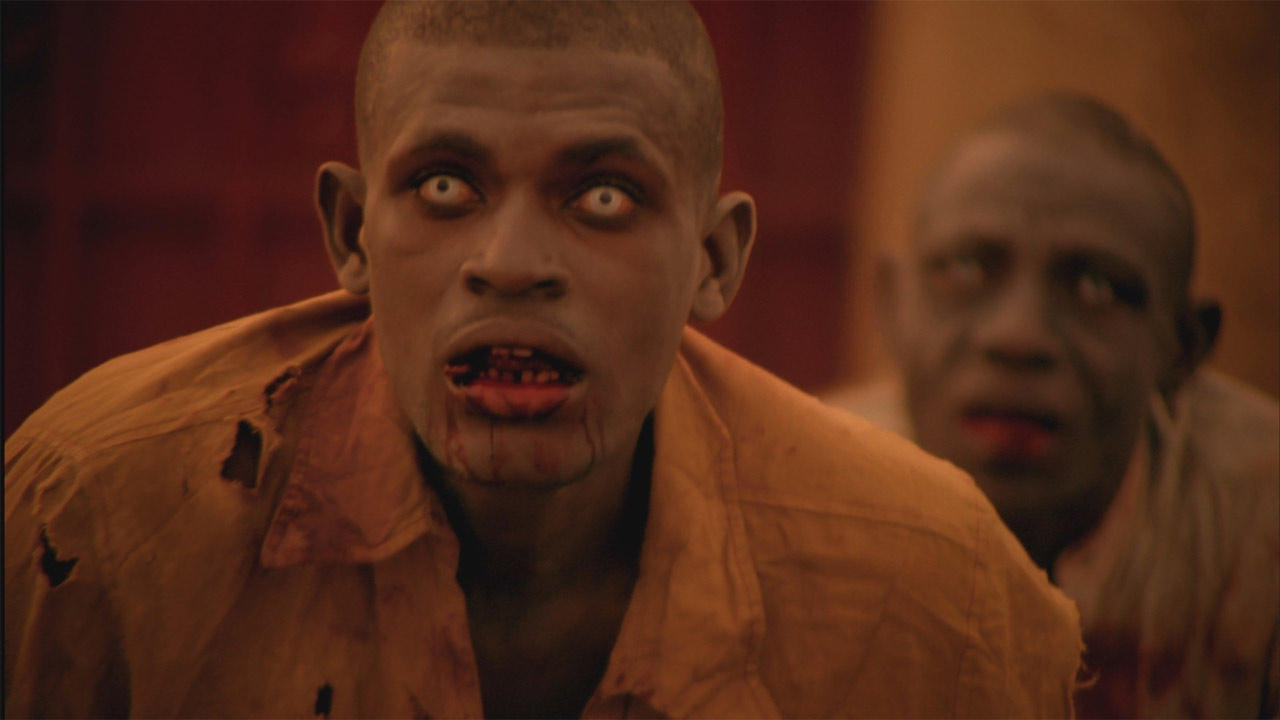28 Weeks Later

The opening sequence of 28 Weeks Later -- call it an opening salvo -- is utterly ferocious. Proceedings start quietly, but this is a sequel to the apocalyptic 28 Days Later, and, as in any zombie movie, peace is only the prelude to a storm of blood and viscera. It starts with a woman trying to cook a meal, in the dark, as photographic evidence of the world that used to exist distracts her from the task. She's part of a cobbled-together family living in a cottage, isolated, in the London countryside. Though the house is dark, it's daylight outside -- the windows have been tightly boarded against the sunshine and the possibility of unwanted visitors.
When the zombies invade, the picture explodes spectacularly. If you saw the previous film, you know these are "rage zombies." Rage zombies are strong and ferocious. If you're bitten by a rage zombie, it takes only a few seconds (rather than the minutes or hours that can transpire before re-animation occurs in a George Romero zombie film) for the infection to take hold of your brain. And if you're being chased by a rage zombie, well, move fast, because these monsters are sprinters. As a longtime zombie fan, I've been something of a slow-zombie purist, preferring the ominous shambling rot of an old-school zombie picnic to the amped-up, ecstasy-fueled rave parties made popular by 28 Days Later and the clearly 28 Days-inspired Dawn of the Dead remake. But this shit is effective -- edited with fast-moving, assaultive cuts, shot with the shutter angle cranked so that every terrified face registers only in an abstracted series of staccato frames flashing across the darkness, and given a pounding sound mix that, in a loud theater, works your ears like a meat tenderizer.
But the big difference between this sequence and the kind of explosive, in-your-face horror in which films like Resident Evil traffic, is that director and co-writer Juan Carlos Fresnadillo is using the action not just to grab the audience in the opening reel, but to establish character and set the story in motion. The sense of despair engendered by that section of the film sticks around, and it isn't just a function of the images of death and mayhem. It's more about the look on the face of Don (Robert Carlyle) when the fight is over, and his eyes reveal desperation, determination, and shame in equal measure that will resonate throughout the film. When he hooks up with his children Andy (Mackintosh Muggleton) and Tammy (Imogen Poots) months later, he's got a lot of explaining to do.
Just as Don's family is trying to rebuild, a nation-building force has arrived on the scene to prep an empty London for repopulation. Images of the U.S. military as an occupying force, specifying the boundaries of a so-called "green zone" where civilians can move about freely, have obvious political currency. Talk about a war on terror -- chaotic scenes where soldiers are instructed to open fire on ordinary men and women in an effort to exterminate the infected are excruciatingly potent, especially as Fresnadillo's narrative expands to include one soldier who defies the kill order. The stakes are raised so skillfully from scene to scene that the climactic conflagration that hits about two-thirds of the way through is all shock and awe, dramatizing the ruthless haplessness of an army escalating the horror as it watches its own mission spiral disastrously out of control.
Visually, too, Fresnadillo delivers the goods. This film looks many times better than its predecessor, which was made using, essentially, a consumer-grade DV camera. Shot on film and color-corrected digitally, 28 Weeks Later has a spooky fixation on eyes and vision, or the lack of it. You can tell a man has been infected partly by the dramatic discoloration of his eyes (also, of course, by the way he chews on your arm); one character, in apparent homage to a very similarly staged scene in Blade Runner, gouges out the eyes of another whose imploring gaze haunts him still; rooftop-stationed soldiers use their infrared rifle scopes to scan the windows of green-zone apartments in search of comedy and/or nookie. A night-vision scene late in the film showing a green-faced Tammy staring out of the dark, wide-eyed and near tears as she tries to navigate the piles of corpses in the London Underground, is especially haunting.
And the series of set pieces that make up the film's second half is unrelenting, with the action ramping up from one unpleasant scenario to the next. It's Fresnadillo's mercilessness that helps keep what becomes the film's core storyline -- two kids, on the run, who may or may not hold the key to humankind's salvation -- from verging on cuteness. 28 Weeks Later may be about a family, but it's a family whose members hold a mean grudge -- and may or may not be bitten, bludgeoned, or firebombed out of existence at any given moment. It's not often remarked on that the best horror movies are among the most sensitive to human feelings -- and by just about any reckoning, 28 Weeks Later is all about the 21st-century human condition. It's punishing and exciting and ferociously intelligent in equal measure. It's the best zombie picture in God knows how long, and the finest English-language horror movie in too many years. A-
Posted by on May 9, 2024 8:35 PMGet 28 Weeks Later on Blu-ray pr DVD from Amazon.com


